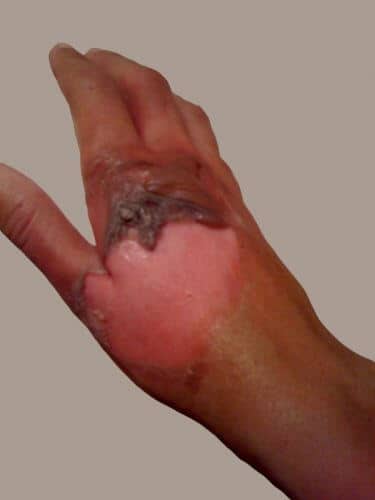The technology controls the rapid proliferation of cells that produce collagen, which creates the scarring following severe burns

Victims of deep and extensive burns, who survived the initial trauma, are expected to deal with severe scars for the rest of their lives, which cause physical, mental and aesthetic difficulties. Researchers all over the world have already developed and tested many approaches to treating the excruciating scars: surgical removal, laser treatments, electron beam, pressure dressings, silicone sheets and more - but with very little success.
Now researchers at Tel Aviv University, in collaboration with their colleagues at Harvard and the Shriners Hospital for Burns in Boston, have developed a new and promising method, which may significantly reduce the extent of scarring during recovery from burns, and prevent great suffering from millions of people all over the world.
The study was recently published in the Journal of Investigative Dermatology
High voltage pulses
"The body reacts to the trauma of the burn through the very rapid culture of fibroblastic cells that produce collagen, in order to cover the damaged area," explains Dr. Alex Gulberg from the Porter School of Environmental Studies at Tel Aviv University, one of the leaders of the research. "But the natural healing process results in a state of 'over-healing' - the creation of tissues that are too large and thick, which are actually the scar. We have developed a new, non-invasive method that will allow control of the scarring process, and may significantly reduce the formation of scars."
The new method, known as pIRE (partially irreversible electroporation), is based on exposing the damaged skin to electric fields with very short pulses at high voltage. "The scarring following a burn is a very complex process, involving inflammatory processes and aspects of metabolism, and our method intervenes in this process," says Dr. Gulberg. "We believe that the electric pulses sent to the scarred skin irreversibly damage some of the cells that produce collagen, thus reducing the production of the collagen that creates the scar. However, it is very important to find the right and exact dosage, which results in an optimal result. Overexposure may create a new wound in the skin that does not heal; Too little exposure allows the continuation of the natural process of over-healing."
As part of the study, the technique was tested on a burn model of laboratory rats. The rats' burns were treated five times over the course of six months, and the results were compared to those of the control group - similar burns that were not treated at all, and scarred naturally. The assessment was carried out using an innovative imaging method, developed at the Massachusetts General Hospital in the USA. The result was extremely encouraging: the treatment resulted in a nearly 60% reduction in the extent of the scars.
Now, following the success of the research in the laboratory, the researchers are planning the next step: building a suitable device and conducting a clinical trial, to bring the innovative approach to humans recovering from burns.
"The method of exposure to electric fields has great potential in the prevention of scars, and also in the treatment of other skin problems," concludes Dr. Gulberg. "It is an innovative, effective and non-invasive approach, which was originally developed to treat a variety of degenerative skin diseases. In previous studies, we showed that it is also effective for disinfecting contaminated wounds after burns, as well as in procedures of a cosmetic nature, such as treating various defects, renewing and rejuvenating the skin."
The research was carried out with the support of the Shriners Foundation, which finances research activities on burns in children.
